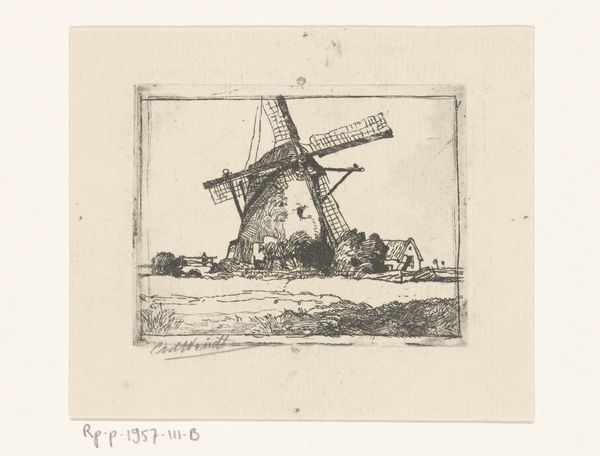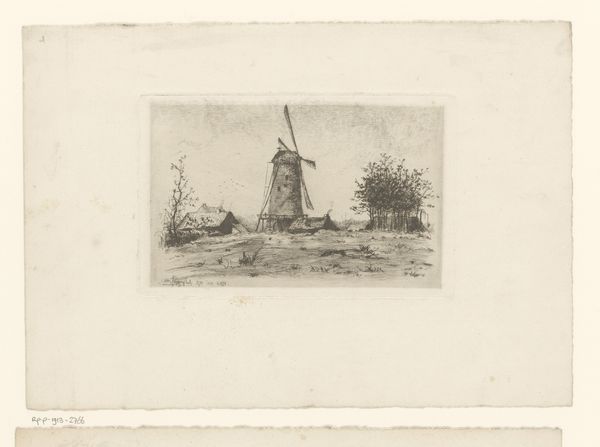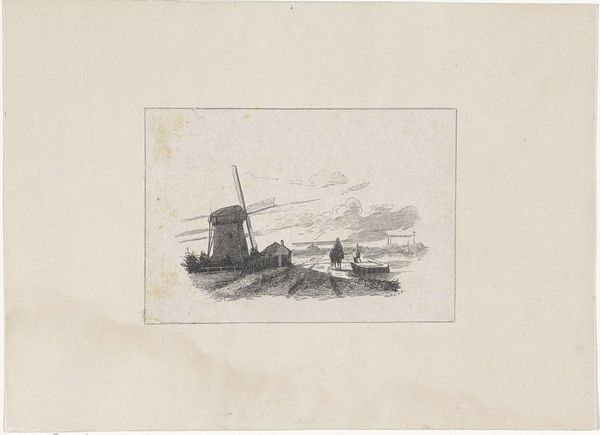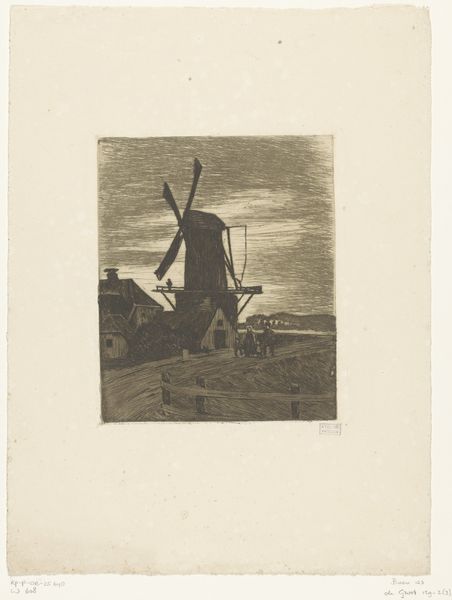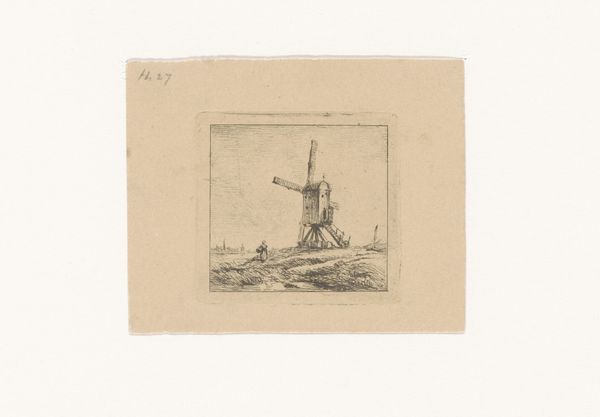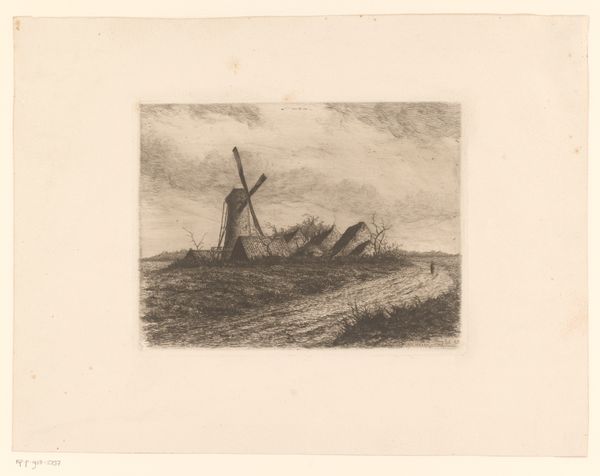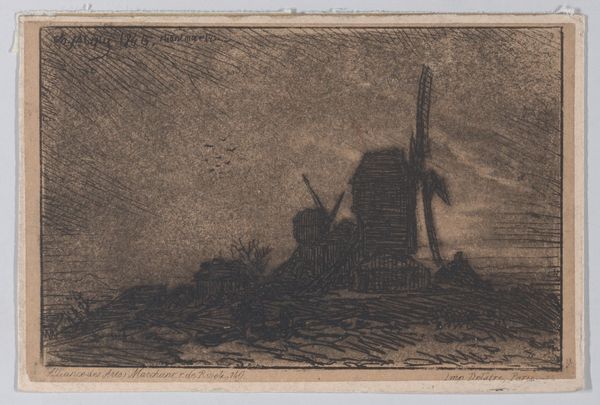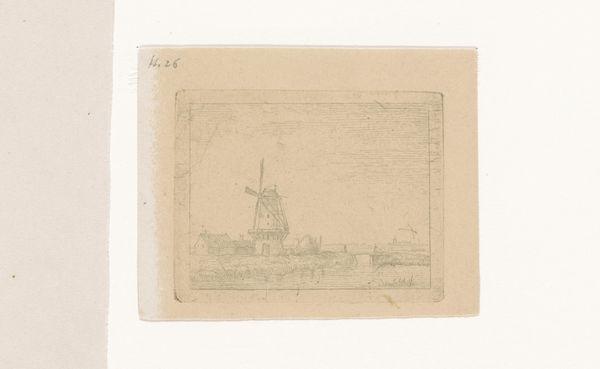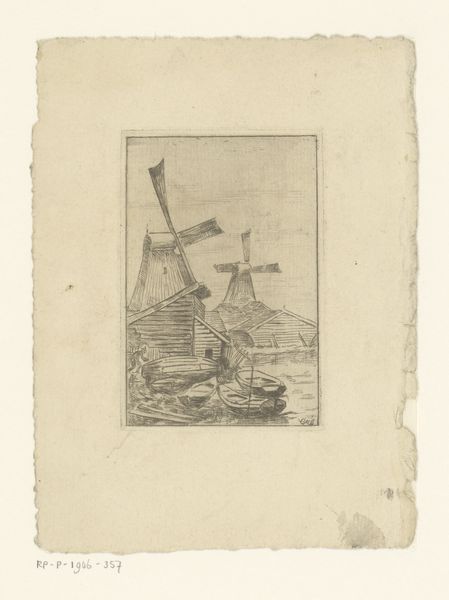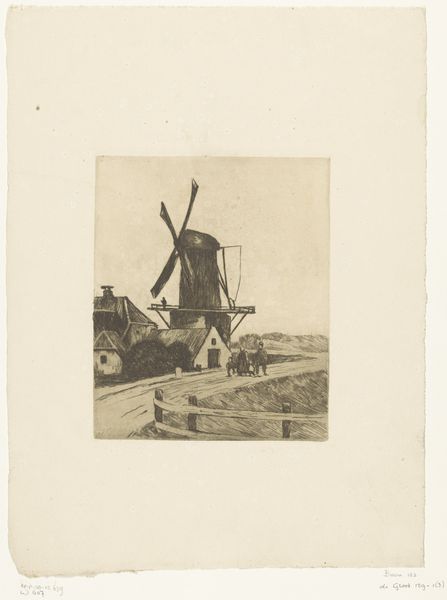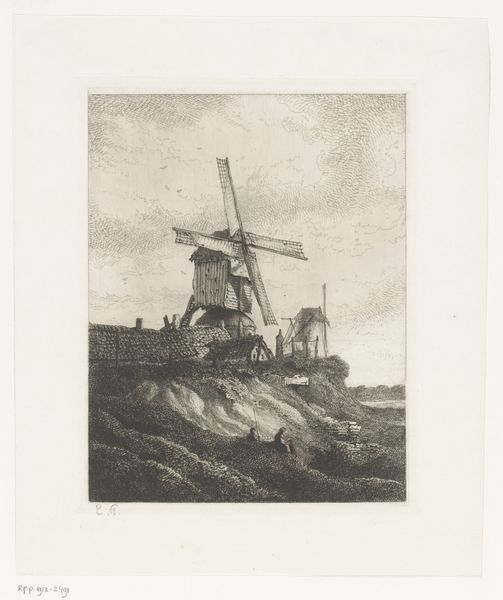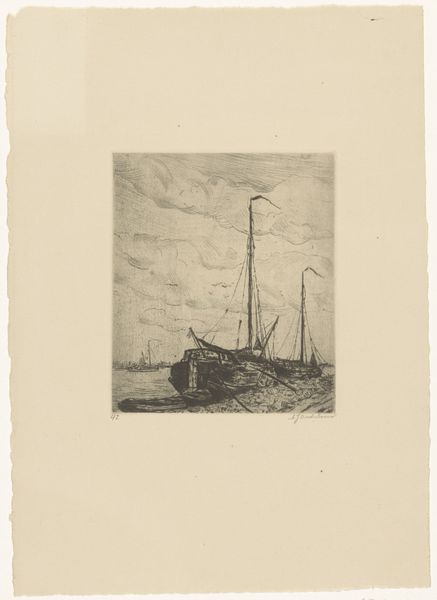
print, etching, paper
# print
#
impressionism
#
etching
#
landscape
#
paper
#
monochrome
Dimensions: height 105 mm, width 95 mm
Copyright: Rijks Museum: Open Domain
Robert Mols created this small etching called 'Molen aan het water', or 'Mill by the Water' during the late 19th century, a period defined by rapid industrialization, urbanization, and a growing interest in landscape as a symbol of national identity. Mols, like many of his contemporaries, turned to the countryside for inspiration, seeking refuge from the changing world. In the 19th century, windmills were not just industrial structures, they also held a profound cultural significance, embodying the spirit of Dutch ingenuity and perseverance. They became powerful symbols in art and literature, representing an idealized version of rural life. Notice how Mols used the etching technique to create a sense of depth and texture in the landscape. This speaks to the nostalgia for a pre-industrial past, suggesting a longing for simpler times. The mill, standing against the horizon, evokes a sense of solitude, reflecting the emotional complexities of a society undergoing radical transformation. It reminds us of the human connection to the environment.
Comments
No comments
Be the first to comment and join the conversation on the ultimate creative platform.
